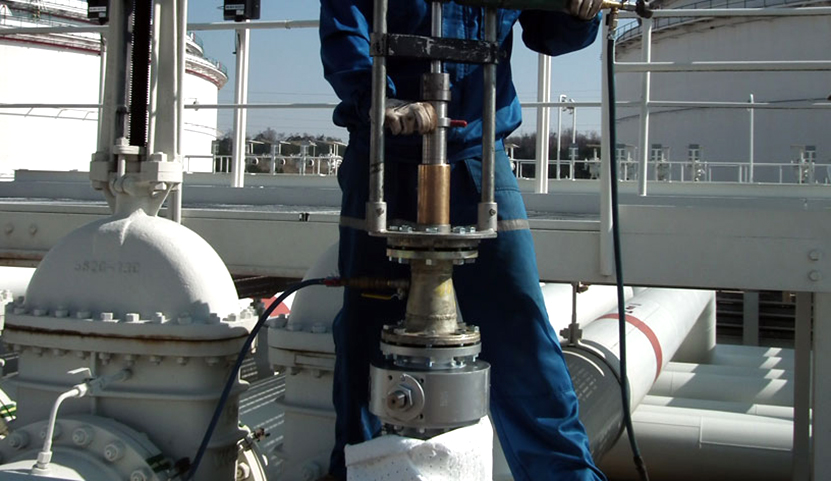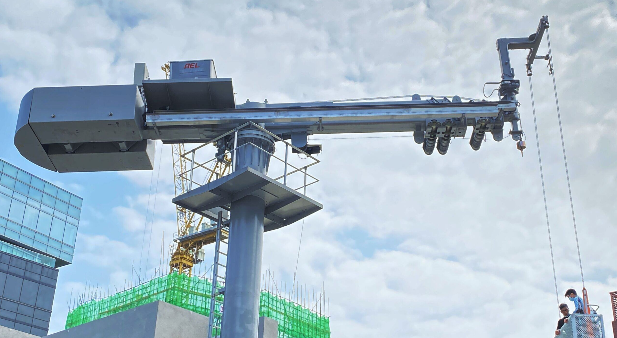Pipeline plugging equipment in Chile plays a critical role in maintaining the integrity, safety, and efficiency of pipelines across various industries. With Chile’s growing demand for oil, gas, water distribution, and industrial processing, the reliability of pipelines is of utmost importance. Pipeline plugging solutions are designed to temporarily or permanently stop the flow of materials within pipelines, enabling repairs, inspections, or maintenance without major disruptions. Their strategic deployment helps prevent leaks, environmental contamination, and operational downtime, which can be costly and hazardous. Companies across Chile increasingly rely on state-of-the-art plugging equipment to comply with strict safety regulations and ensure seamless operations. These devices are engineered to handle varying pipeline diameters, pressures, and materials, making them versatile tools for industrial applications. Investing in high-quality pipeline plugging equipment enhances not only operational safety but also the longevity and efficiency of pipeline networks.
Types of Pipeline Plugging Equipment
Pipeline plugging equipment in Chile comes in a range of specialized types, each designed for specific operational needs. Mechanical plugs are among the most commonly used, providing reliable sealing for both temporary and emergency shutdowns. They feature expandable components that fit snugly within the pipeline, ensuring minimal risk of leaks and easy installation. Pneumatic plugs operate using compressed air, allowing quick deployment and excellent control under high-pressure conditions. These plugs are ideal for urgent repairs or situations requiring rapid isolation of sections within a pipeline. Hydraulic plugs, on the other hand, utilize hydraulic pressure to create a strong seal, making them suitable for high-pressure pipelines in the oil, gas, and chemical sectors. Temporary plugs are often employed during maintenance and inspections, while permanent plugs are used for long-term isolation or decommissioning of pipelines. Selecting the correct type of plug depends on pipeline specifications, material flow, and safety requirements, emphasizing the need for careful assessment before deployment.
Applications Across Industries
The applications of pipeline plugging equipment in Chile extend across multiple industries, reflecting the country’s diverse industrial landscape. In oil and gas pipelines, plugs are essential for leak prevention, inspection, and repair without shutting down the entire network. Water and sewage systems also rely heavily on plugging equipment to maintain uninterrupted service while repairing or replacing sections of pipelines. Mining operations, a significant industry in Chile, utilize these tools to safely transport slurry, water, or chemicals while performing essential maintenance. Industrial chemical pipelines benefit from plugging solutions to prevent contamination, safeguard personnel, and comply with environmental regulations. Even municipal and urban infrastructure projects make use of temporary and mechanical plugs to minimize disruption to communities. In all applications, pipeline plugging equipment ensures operational continuity, mitigates risk, and contributes to safer working conditions for personnel.
Selection Criteria for Pipeline Plugging Equipment
Choosing the right pipeline plugging equipment in Chile involves several technical and operational considerations. Pipeline diameter is a primary factor, as plugs must fit precisely to ensure an effective seal. Material composition of the pipeline, whether steel, PVC, or polyethylene, can affect the type of plug selected. Pressure and temperature conditions are critical, particularly for pipelines carrying high-pressure fluids or steam. Ease of installation and mobility are equally important, as some projects require frequent repositioning or rapid deployment. Safety certifications and compliance with Chilean standards are essential to meet regulatory requirements. Evaluating the operational environment, such as pipeline accessibility and surrounding infrastructure, helps determine whether a mechanical, pneumatic, or hydraulic plug is most appropriate. Additionally, companies must consider cost-effectiveness, durability, and long-term maintenance to maximize the return on investment for pipeline plugging solutions.
Operational Best Practices
Proper use of pipeline plugging equipment in Chile requires adherence to operational best practices to ensure safety and reliability. Step-by-step procedures for deploying mechanical, pneumatic, and hydraulic plugs minimize risks and prevent operational errors. Personnel must wear appropriate protective gear and follow safety protocols when working with high-pressure pipelines. Testing the plug before full deployment ensures a proper seal and prevents accidental leaks. Monitoring devices can be used to measure pressure, flow, and potential leaks during isolation. After use, plugs should be inspected for wear and damage, and stored in conditions that preserve their longevity. Training and certification of staff are crucial to handle complex plugging operations, particularly in high-risk environments. Regular audits and procedural reviews further enhance safety and operational efficiency across pipeline networks.
Technological Innovations in Pipeline Plugging
Pipeline plugging equipment in Chile has evolved significantly thanks to technological advancements. Smart plugs equipped with sensors can detect leaks, monitor pressure, and provide real-time data to operators. Remote-controlled deployment allows teams to position plugs in hard-to-access locations without direct exposure to hazards. Eco-friendly materials and sustainable designs reduce environmental impact while maintaining high performance. Improvements in plug durability and adaptability mean that a single plug can be used across multiple pipeline sizes and types. Some advanced systems offer automated pressure release and sealing adjustments, reducing human error and increasing efficiency. These innovations help Chilean industries enhance operational reliability while maintaining compliance with strict safety and environmental regulations. The integration of technology into pipeline plugging practices represents a significant step forward in industrial maintenance and safety management.
Challenges and Solutions in Pipeline Plugging
Despite advances, challenges remain in deploying pipeline plugging equipment in Chile. Aging infrastructure can complicate installation and require specialized equipment to accommodate irregular pipe conditions. High-pressure or long-distance pipelines present additional safety and logistical challenges, necessitating careful planning and robust equipment. Emergency situations, such as unexpected leaks or bursts, demand rapid response capabilities and well-trained personnel. Environmental considerations, including sensitive ecological zones, require precise handling and eco-conscious materials. Chilean companies address these challenges through rigorous training programs, strategic equipment selection, and collaboration with experienced suppliers. Proper risk assessment and scenario planning ensure that operations can continue safely even under challenging conditions. Continuous innovation and adherence to best practices provide reliable solutions to these complex pipeline maintenance problems.
Cost Considerations and ROI
Investing in pipeline plugging equipment in Chile involves evaluating both upfront costs and long-term benefits. Purchasing high-quality plugs can be more expensive initially but reduces maintenance costs and downtime over time. Rental options are available for temporary projects, providing cost flexibility without compromising safety. Effective plugging equipment minimizes operational disruptions, preventing costly production halts or environmental fines. Improved safety reduces the risk of accidents, which can lead to significant financial and legal liabilities. Additionally, reliable plugs extend the lifespan of pipelines by preventing damage during maintenance or emergency repairs. Companies can achieve a strong return on investment by balancing cost with operational efficiency, safety compliance, and the potential reduction in downtime.
Regulations and Safety Standards in Chile
Pipeline plugging equipment in Chile must comply with stringent regulations to ensure safety and environmental protection. Regulatory bodies establish guidelines for equipment design, installation, and operation to minimize risks to personnel and infrastructure. Compliance with standards such as ISO certifications and local Chilean safety requirements is mandatory for industrial operations. Regular inspections and documentation ensure that plugging equipment continues to meet safety specifications. Understanding the legal framework helps companies avoid fines, legal liabilities, and operational setbacks. Safety protocols are continuously updated to address new technological developments and emerging risks. Adhering to these regulations ensures that pipeline operations in Chile remain secure, efficient, and environmentally responsible.
Frequently Asked Questions (FAQ)
What types of pipeline plugging equipment are most commonly used in Chile?
Mechanical, pneumatic, and hydraulic plugs are widely used, each suited to specific pipeline sizes, pressures, and materials.
How do I choose the right plug for a high-pressure pipeline?
Consider pressure rating, pipeline diameter, material, and operational environment. Hydraulic or pneumatic plugs are often preferred for high-pressure applications.
Can pipeline plugs be reused after deployment?
Many plugs, especially mechanical and pneumatic types, can be reused after proper inspection and maintenance, but permanent plugs are typically single-use.
What safety certifications should I look for in pipeline plugging equipment?
Look for ISO certifications, local Chilean safety compliance, and pressure rating approvals to ensure reliability and regulatory adherence.
How does Chilean regulation affect pipeline maintenance practices?
Regulations dictate equipment standards, operational procedures, and inspection frequency, ensuring that pipeline maintenance prioritizes safety and environmental protection.











